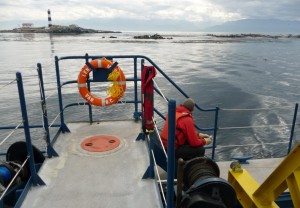September 17, 2011: Clean Current Staff and diving contractors return to remove the generator for the last time. The generator returns to Vancouver for a final analysis of structural details after exposure in the ocean over the last three years . After cleaning it is to be sent to the Museum of Science and technology in Ottawa, since it was the first ocean tidal generator to be built and deployed in Canada.
The process of removal starts with the barge Lena Marie positioned above the turbine waiting for slack water.
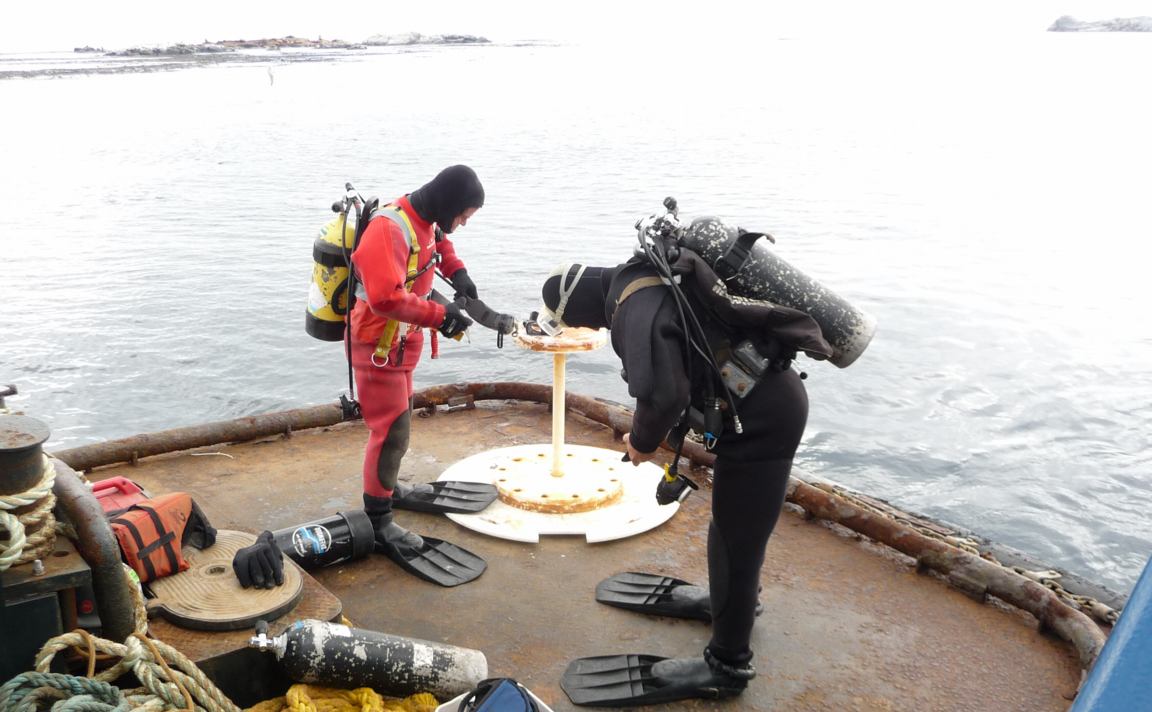 |
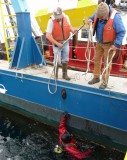 |
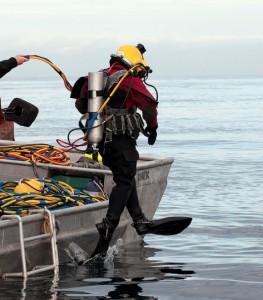 |
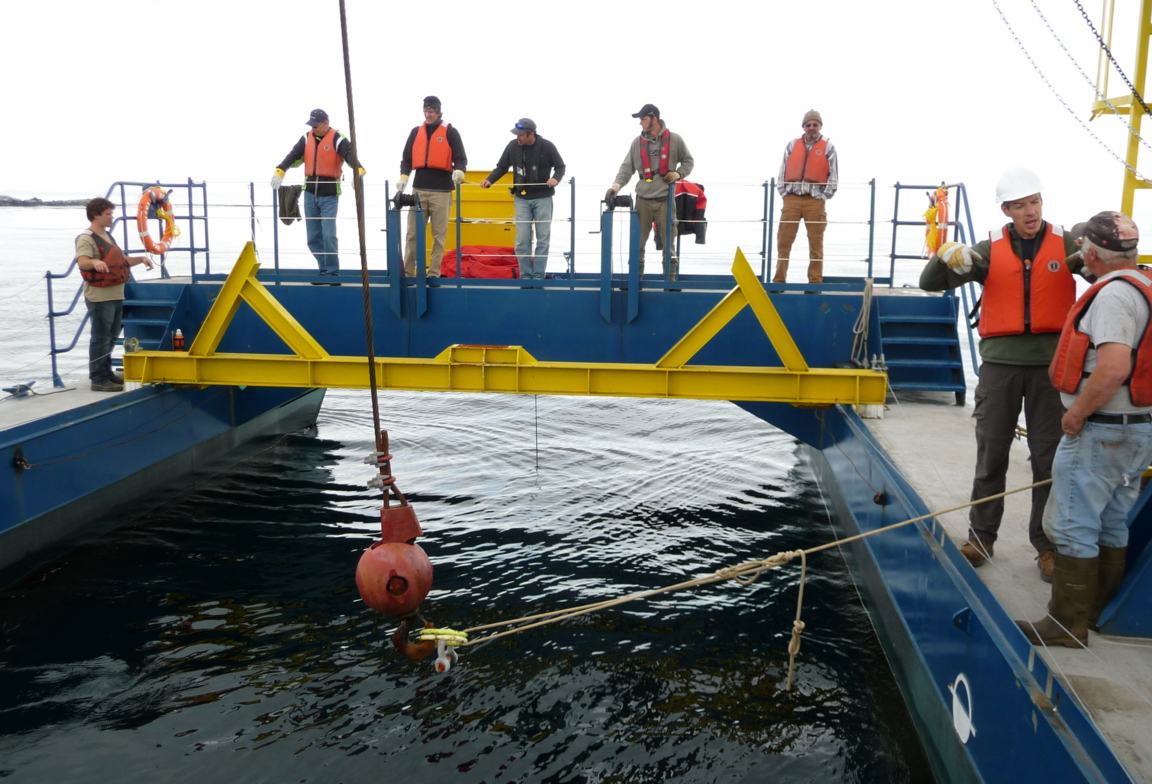 |
| Divers prepare for descending to make preparations for lifting the generator | Passing lines to the divers to stabilize the turbine for lifting | A hard hat diver was deployed to remove the bolts fastening the generator to the piling.( RM photo) | The crew waits on board the Lena Marie as the winch hook is lowered for attachment. |
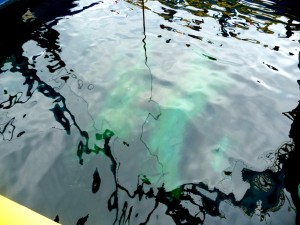 |
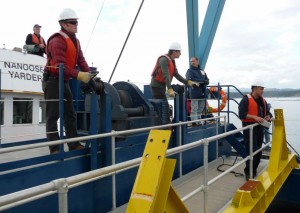 |
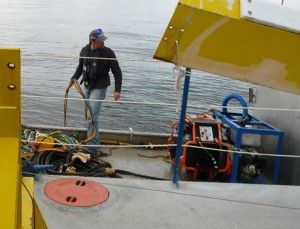 |
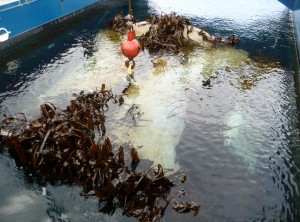 |
| First signs of the generator subsurface. | Clean Current staff controlling the lifting. | Chris Blondeau tending the hard hat diver. | The generator breaks the surface |
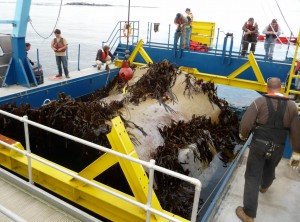 |
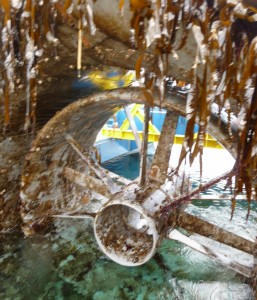 |
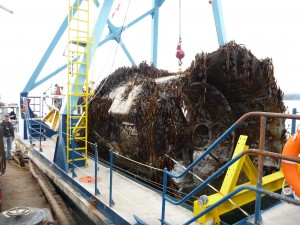 |
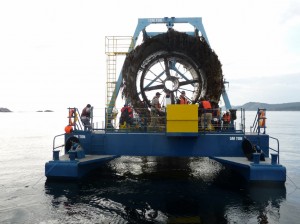 |
| As it emerges, the fouling organisms from the last three years appear. | View of the turbine as the tidal generator comes out of the water. | The predominant macroalgae covering the structure was Laminaria groenlandica. | Lifting operation complete |
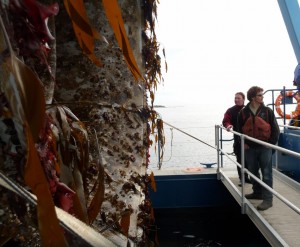 |
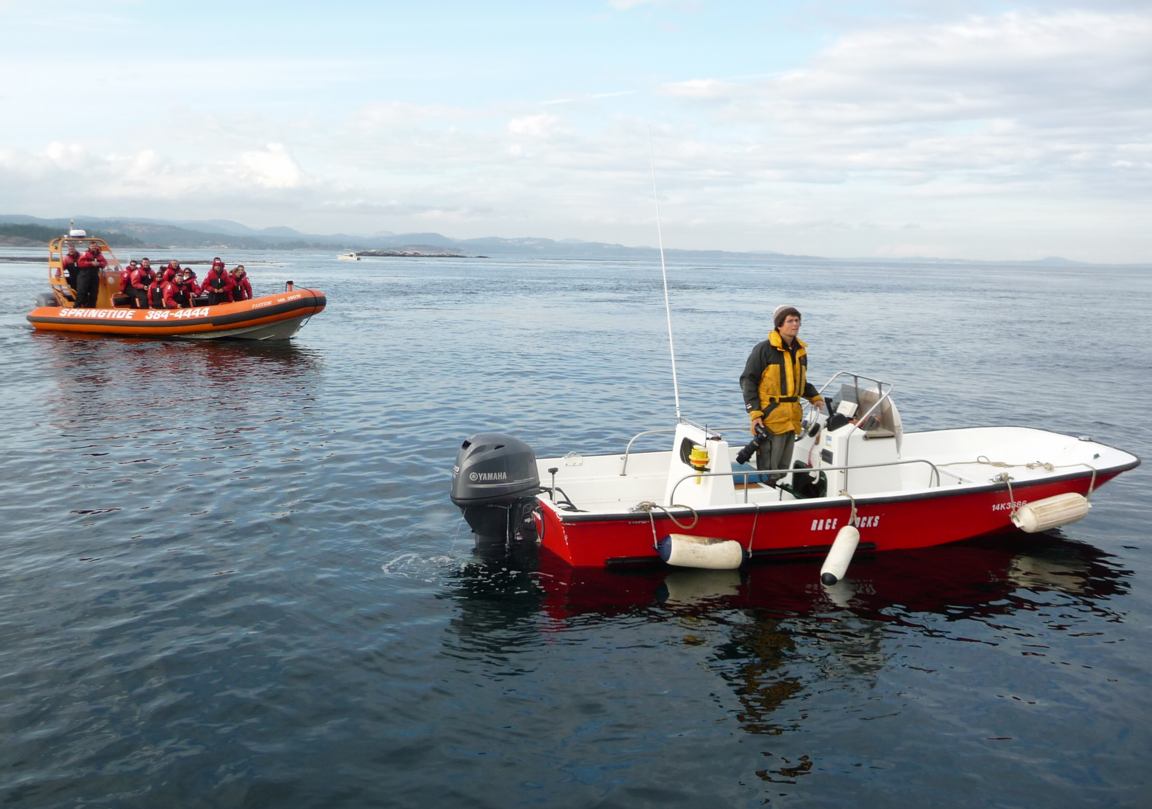 |
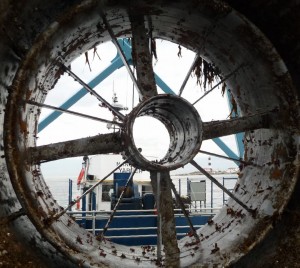 |
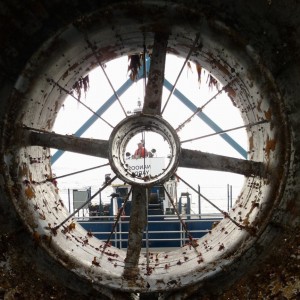 |
| Several red algaes also grow on the structure. | Ryan in the station boat and some curious whale watchers. | Race Rocks through the generator as it heads back to Pearson College. | Tug operator Bruce Davidson seen through the central hole of the generator. |
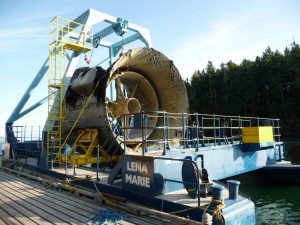 |
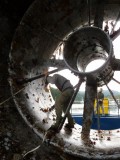 |
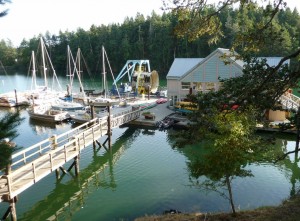 |
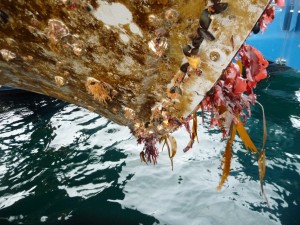 |
| Moored back at the college awaiting transfer to Vancouver. | Erik fastens straps to secure the blades for transport. | Lester Pearson College docks with the generator docked alongside. | Some images of the fouling organisms, part of the ecological succession on the turbine. |
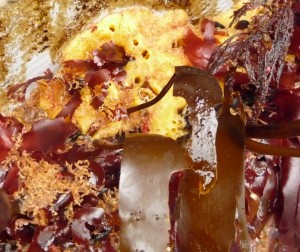 |
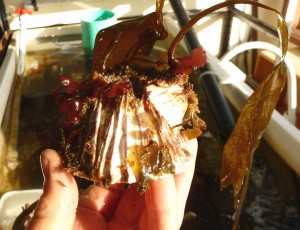 |
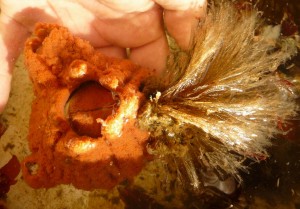 |
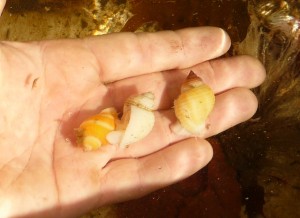 |
| A yellow sponge, probably Mycale toparoki | Very large barnacles that were not Balanus nubilus, but perhaps Semibalanus carriosus were common on the surface. | A unique encrustation of hydroids on a single barnacle. Samples of the many hydroid species were taken by Garry for further identification in the lab. | Interesting colour morphs of Nucella canaliculata
Images by Garry Fletcher |
n conclusion: The Tidal Current Generator operation over the past six years has been an interesting experiment and a good demonstration of the potential power from tidal energy. The value to the Race Rocks program has been largely in the infrastructure that has been developed and installed and the potential for further research. The provision now of most of the energy needs by solar power was only made possible by the large bank of storage batteries provided by the project, the island energy building electrical infrastructure and the partnership with the BC Ministry of Mines and energy which were instrumental in providing the initial solar panels.
Only one student project was developed as a result of the turbine, and this was an analysis of an experiment by Clean Current of the power generation capacity of the generator by Connor Scheu and Wouter Zwart in 2009. In that report, the advantages of the exercise to the company are indicated.
However, due to problems with fibre optic cable malfunctioning and electrical cable leakage, the ability of the generator operate continuously and to provide significant power for the Integrated Energy system at Race Rocks was very limited. It did serve as an adequate base for testing structural materials, and Clean Current provided ongoing support to the Race Rocks program while the turbine was installed.
Garry Fletcher, Race Rocks Ecological Reserve warden



